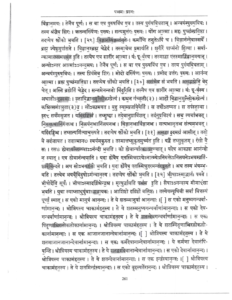Today, we will look at the application of 8-3-23 मोऽनुस्वारः applied in the following verse from Bg1-32
न काङ्क्षे विजयं कृष्ण न च राज्यं सुखानि च ।
किं नो राज्येन गोविन्द किं भोगैर्जीवितेन वा ।।१-३२
The वृत्तिः from Laghu Siddhanta Kaumudi is
मान्तस्य पदस्यानुस्वारो हलि
When the letter ‘म्’ occurs at the end of a पदम् and is followed by a हल् letter, it is replaced by an अनुस्वारः (represented by a dot.)
विजयम् कृष्ण । विजयम् gets पद-संज्ञा by 1-4-14 सुप्तिङन्तं पदम्
विजयं कृष्ण । By 8-3-23 मोऽनुस्वारः, when the letter म् at the end of a पदम् is followed by a letter हल्, it gets repalced with अनुस्वारः
विजयङ् कृष्ण । 8-4-59 वा पदान्तस्य When an अनुस्वारः occurs at the end of a पदम् and is followed by a यय् letter, then it is optionally substituted by a letter which is सवर्ण: with that following यय् letter.
Thus we have two alternate forms, विजयं कृष्ण and विजयङ् कृष्ण
Questions:
1. In step 2, why did the अनुस्वार-आदेशः, that was ordained for the entire पदम्, replace only the final letter म्?
2. Which is the one letter in the यय् प्रत्याहारः that does not have a सवर्णः which can replace the अनुस्वार?
3. Under the sutram 8-3-23 मोऽनुस्वारः, Siddhanta Kaumudi says पदस्येति किम्? गम्यते Please explain
4. Try locating the application of this rule in the Taittiriya Upanishad extract that was attached in yesterday’s post. The image is below, and you can download the pdf here

Recent Comments